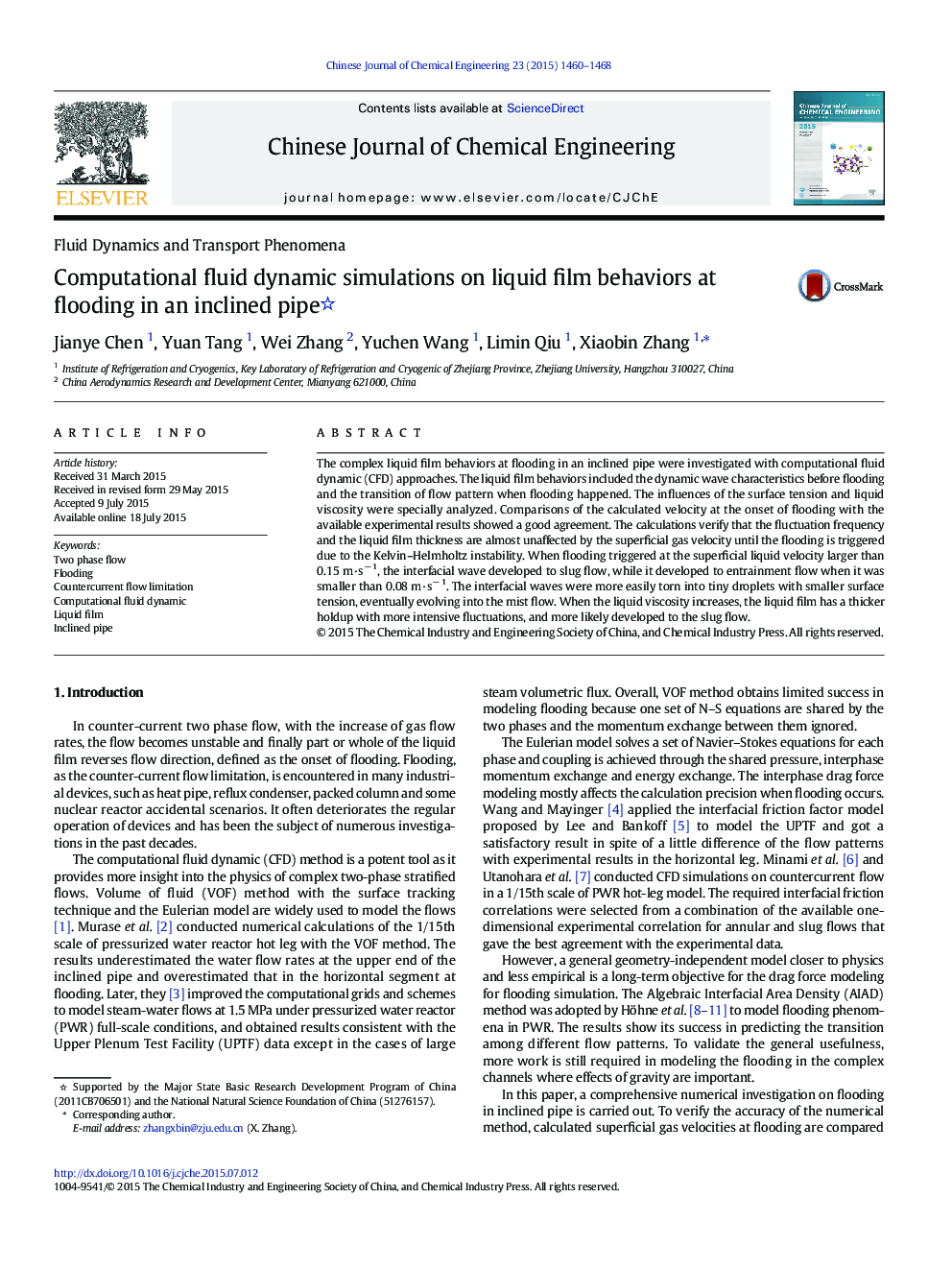| Article ID | Journal | Published Year | Pages | File Type |
|---|---|---|---|---|
| 167001 | Chinese Journal of Chemical Engineering | 2015 | 9 Pages |
The complex liquid film behaviors at flooding in an inclined pipe were investigated with computational fluid dynamic (CFD) approaches. The liquid film behaviors included the dynamic wave characteristics before flooding and the transition of flow pattern when flooding happened. The influences of the surface tension and liquid viscosity were specially analyzed. Comparisons of the calculated velocity at the onset of flooding with the available experimental results showed a good agreement. The calculations verify that the fluctuation frequency and the liquid film thickness are almost unaffected by the superficial gas velocity until the flooding is triggered due to the Kelvin–Helmholtz instability. When flooding triggered at the superficial liquid velocity larger than 0.15 m·s− 1, the interfacial wave developed to slug flow, while it developed to entrainment flow when it was smaller than 0.08 m·s− 1. The interfacial waves were more easily torn into tiny droplets with smaller surface tension, eventually evolving into the mist flow. When the liquid viscosity increases, the liquid film has a thicker holdup with more intensive fluctuations, and more likely developed to the slug flow.
Graphical abstractWhen flooding happens in the counter-current gas–liquid flow system, the liquid film will be dragged up by the gas flow and some liquid drops will be torn off the interfacial waves, and this process is simulated exactly by the CFD code in this study. Considering the influences of fluid properties, the liquid film behaviors included the dynamic wave characteristic during flooding is investigated by the numerical calculation methods.Figure optionsDownload full-size imageDownload as PowerPoint slide
